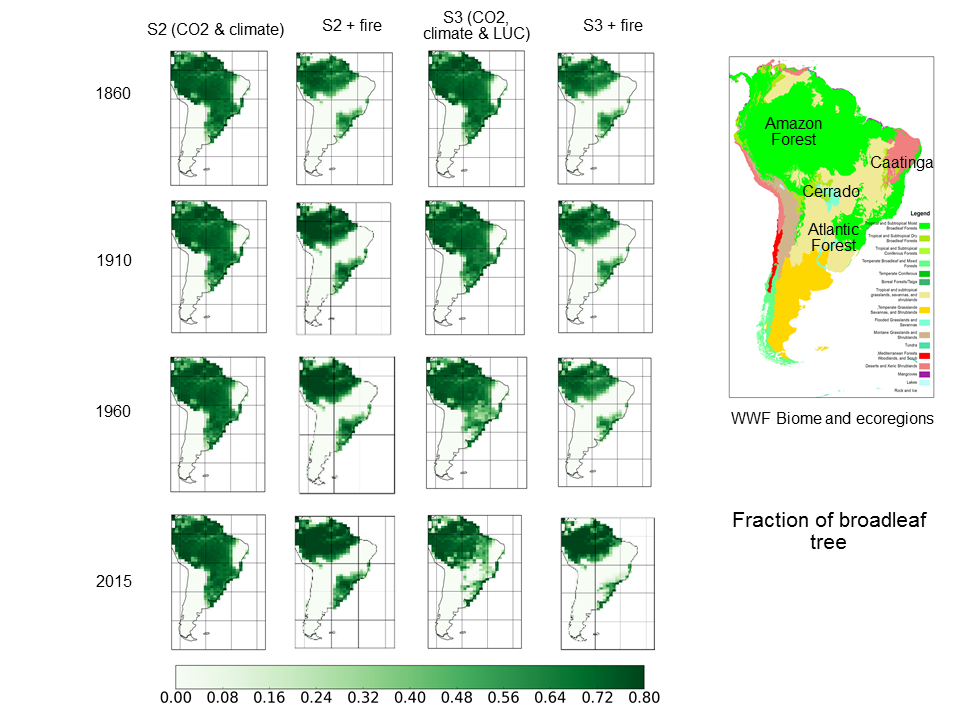
Posted by Ted Feldpausch
24 November 2019Fire is an important disturbance factor on the land surface, and effects carbon, nitrogen and water cycles, and it is therefore important to be able to represent this process in models. The UK land surface model JULES (Joint UK Land Environment Simulator) is a community model used by research communities world-wide. It represents elements of the land surface such as vegetation, crops, rivers, and permafrost, including processes such as land-use change (LUC), and more recently fire through the fire model INFERNO. Fire was initially implemented in JULES simply as a calculation of potential burned area based on factors including fuel, temperature, humidity, moisture and ignition. Work led by Chantelle Burton for her PhD project, supervised by Richard Betts and Ted Feldpausch, developed the capability of the fire model to feed back onto the vegetation, introducing specific ‘fire mortality’. Through the dynamic vegetation in the model, the vegetation can regrow following a disturbance event, but the nature of the vegetation may change. In the initial implementation, faster-growing vegetation types such as grasses and shrubs dominated previously forested areas, and further work was required to balance out the mortality terms within the model in order to accurately represent present-day vegetation cover compared to satellite observations. We found that incorporating fire mortality and land use processes lead to improved simulation of vegetation over the Brazilian Cerrado, which is naturally forested in the model without and disturbance factors (Figure 1).
This work helps to build the foundations for further model development, and work is now starting on implementing fire in the UK Earth System Model (UKESM), where further coupling will enable fire emissions to feedback onto the atmosphere. These feedbacks are important for calculating carbon budgets reliably and being able to simulate how fire regimes may change in the future.
This work was supported by the Newton Fund through the Met Office Climate Science for Service Partnership Brazil (CSSP Brazil), and included working with partners from INPE (National Institute for Space Research Brazil), INPA (National Institute for Amazonian Research, Brazil) and CEMADEN (National Centre for Monitoring and Early Warning of Natural Disasters).
Figure 1 (above): Burton, C. (2019) “Impacts of fire, climate and land-use change on terrestrial ecosystems”. Exeter University. http://hdl.handle.net/10871/36801
Text and images: Chantelle Burton